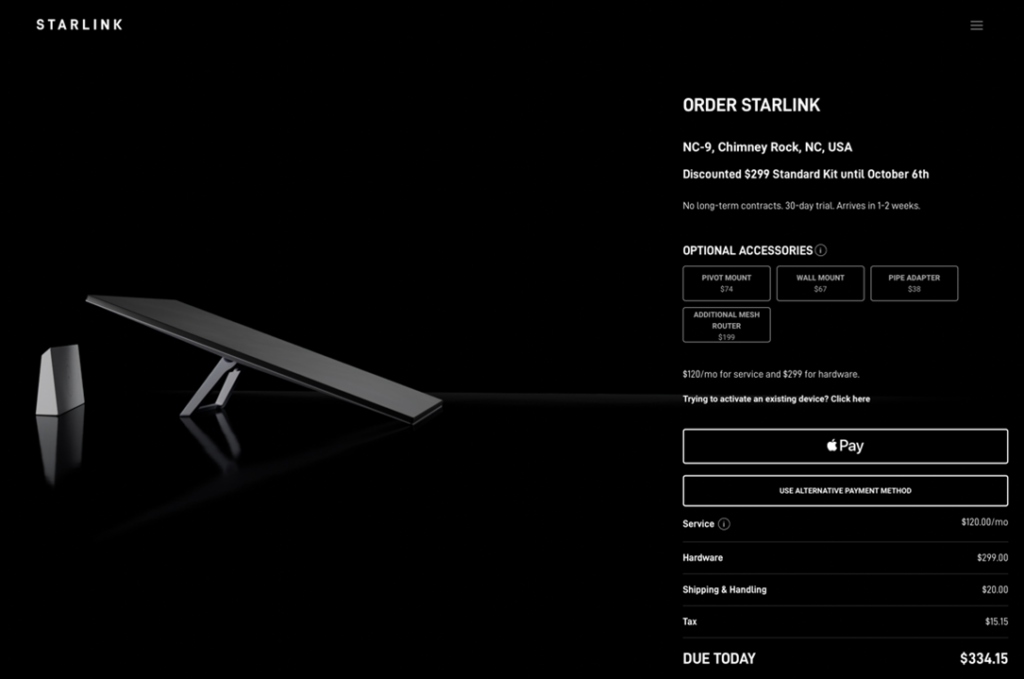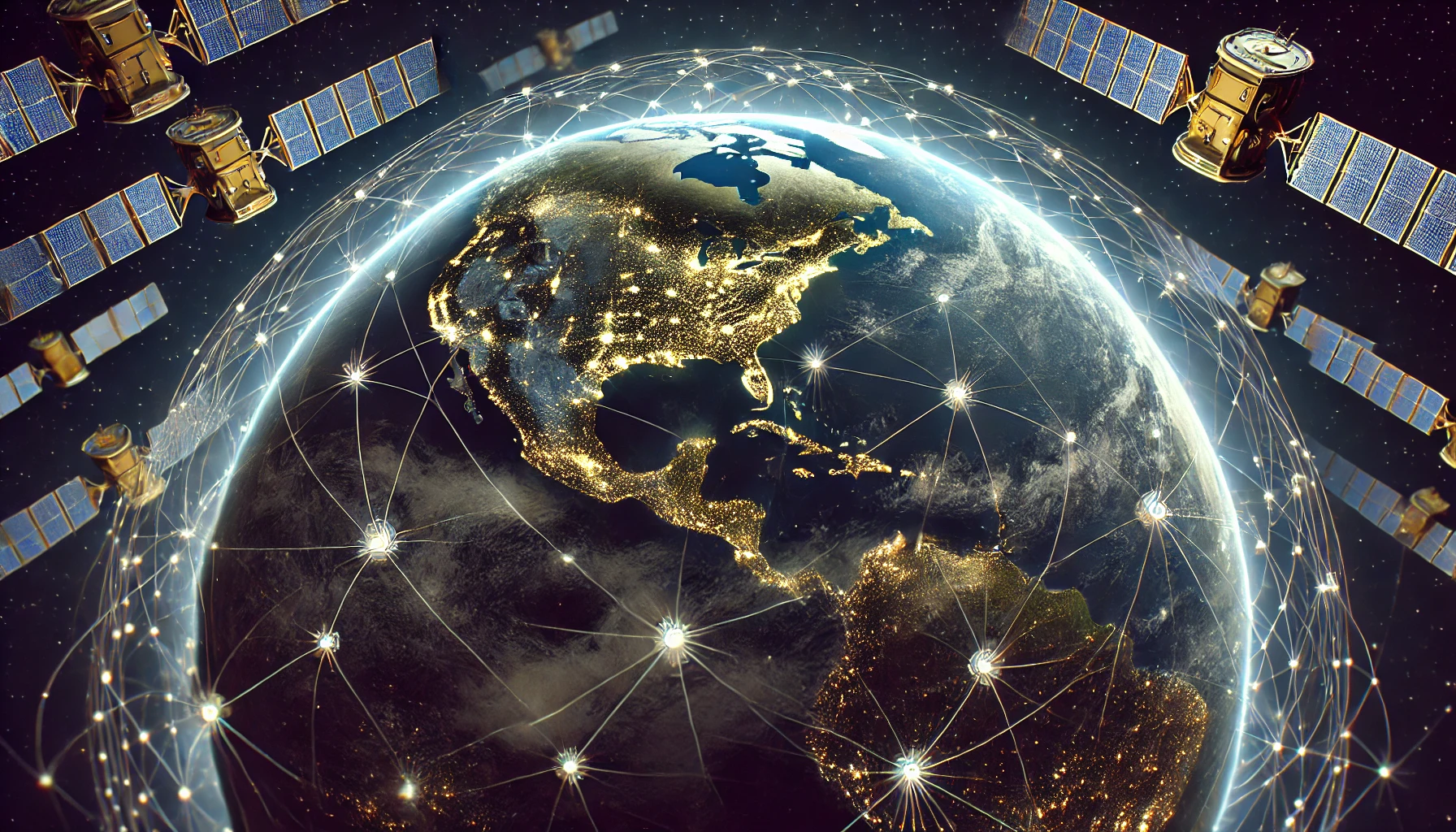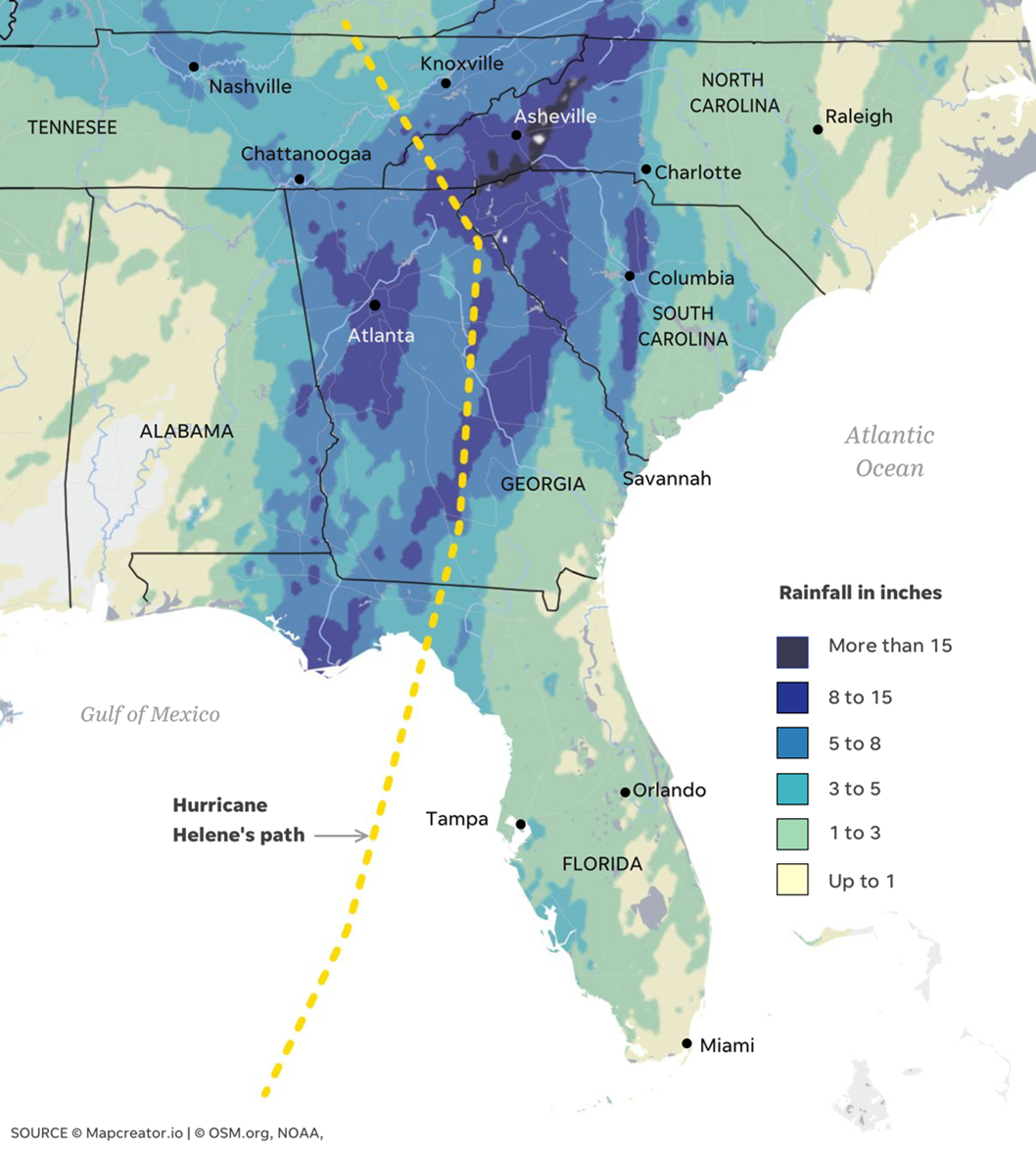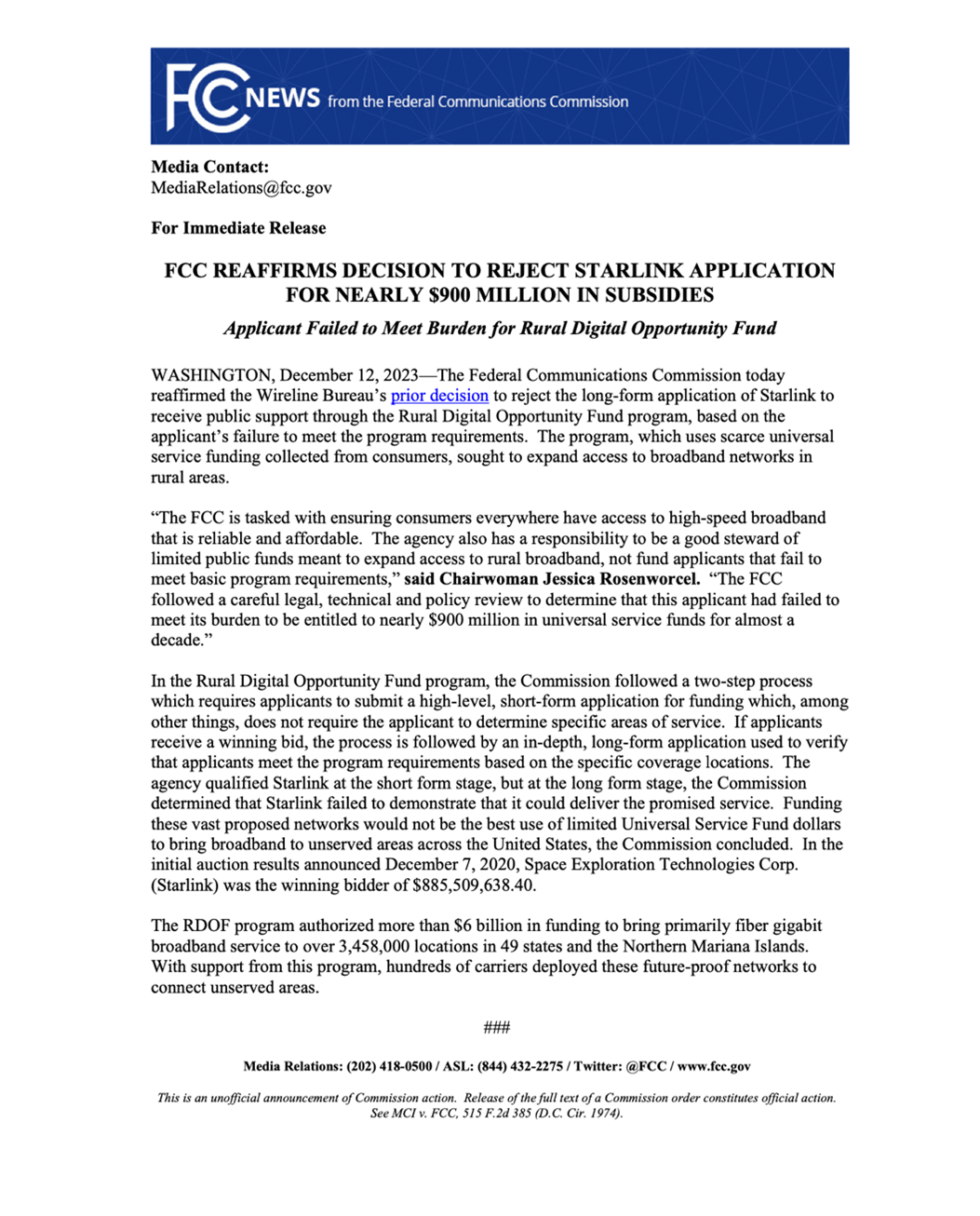Our hearts go out to those who Hurricane Helene impacted. The path of destruction across the southeastern U.S. is hard to believe, as shown in the map below. The pictures and videos that we have seen are heart-wrenching. Entire towns like Chimney Rock, North Carolina—and many others—are gone. I’ll never forget the chaos of being trapped near Chimney Rock. We were only 30 minutes from home in Asheville, but with the Marshall and Chimney Rock communities wholly wiped off the map and the Lake Lure dam bursting, it felt like the world had turned upside down. What should have been a quick drive home became an impossible journey through a sea of fallen trees, landslides, and flooded roads. After driving through heavy rain and roadblocks all night, we found ourselves stranded, desperate and cut off from reliable communication.
The path of destruction across the southeastern U.S. is hard to believe.
SOURCE: NOAA
The pictures and videos that we have seen are heart-wrenching.
Entire towns like Chimney Rock, North Carolina – and many others – are literally gone.
Our Vital Communications Channels
This Helene situation is so unbelievable that it has been hard for me to think about anything else despite a seemingly endless list of topics to explore in high-tech. A disaster like this reminds us of the most valuable things to us—things like water, food, diapers, baby formula, medical supplies, and, of course, communications networks. After all, relief efforts must be organized, and those impacted must stay in touch with friends, family, and those providing aid.
The Problem Could Have Been Solved Already
It’s frustrating to think that the solution to these communication issues was available years ago but has yet to be deployed due to red tape and poor policy decisions. Imagine if emergency satellite solutions were given the same financial backing as traditional fiber networks. The technology is there—it’s reliable, deployable, and proven effective. The only thing missing is the support and approval to get it into the hands of those who most need it. Policymakers must move past outdated infrastructure and embrace more resilient and accessible options like Starlink or direct-to-cell networks before another disaster strikes.
Starlink Has the Solution
SpaceX, one of the most revolutionary companies, has already transformed the aerospace industry and launched the Starlink broadband satellite service. It can provide stable internet in remote and rural areas with a small satellite dish that costs just $334.15 and delivers 100 Mbps speeds. Compare that to fiber optic solutions, which take years to install and cost thousands per connection. Starlink can be set up in minutes in a disaster like Helene, where fiber infrastructure is often destroyed without relying on vulnerable ground-based systems.

Yet, the FCC disqualified Starlink for rural broadband subsidies, stating it couldn’t meet the standards. This decision not only ignores Starlink’s capabilities but also puts the lives of people in disaster-prone regions at risk. While fiber is ideal in normal conditions, its limitations during natural disasters make satellite broadband a better option. Starlink terminals are now being deployed in affected areas, alongside power generators from Polaris Power, to restore connectivity quickly.
The Future of Connectivity: Direct-to-Cell Service
SpaceX isn’t stopping at satellite broadband—it’s setting up direct-to-cell capabilities to allow phones to communicate directly with satellites. This could have been a game-changer during Hurricane Helene, allowing emergency communications even when cell towers were down. This tech is expected to launch commercially with T-Mobile in 2024 or 2025, providing an extra layer of connectivity during emergencies.
But it’s not just SpaceX making waves in this field. AST SpaceMobile (ASTS) is another major player that manufactures its satellites in Texas. AST has signed AT&T and over 40 other wireless operators globally for its direct-to-cell services. The competition doesn’t stop there—Lynk Global is a frontrunner, too. They’ve already secured regulatory approval in over 30 countries and have partnerships with over 40 wireless operators covering more than 50 countries. The direct-to-cell race is heating up, and that’s great news for anyone caught in the path of future storms like Helene.
A Plea for Change
Let’s not wait for another Hurricane Helene to highlight these shortcomings. It’s time for the FCC to reassess its support for emerging satellite solutions like Starlink. Imagine a world where reliable connectivity is available no matter the situation—one where no one is stranded without communication. We shouldn’t have to drive blind in the digital age.



